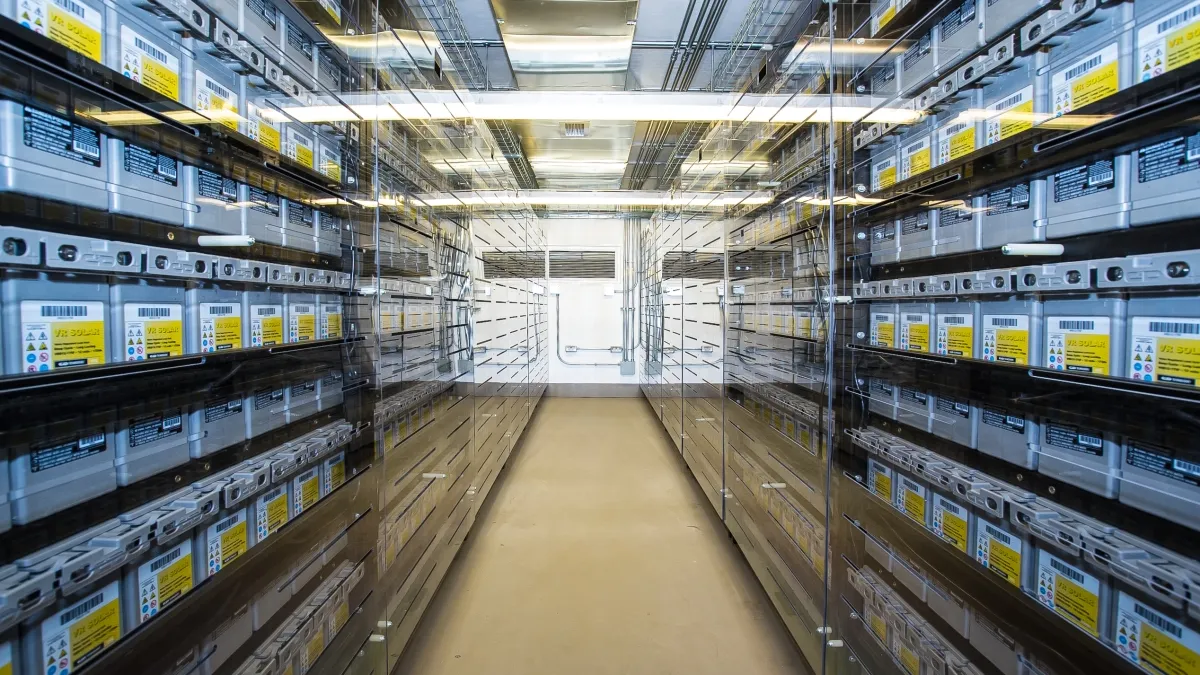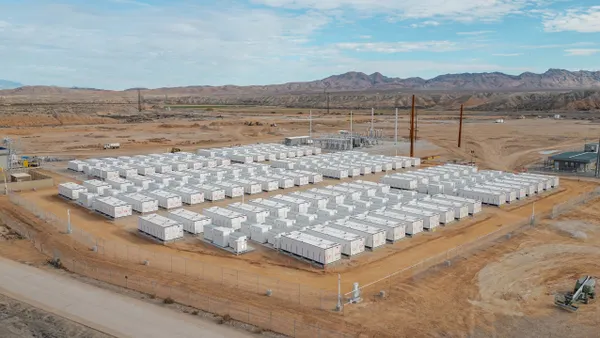Dive Brief:
- A new study from Bloomberg New Energy Finance predicts 45 GW of non-hydro storage will be installed globally by 2024, with the majority of that capacity coming from India and China.
- Greentech Media reports on the BNEF analysis, which anticipates more than half of the world's storage will be installed in the Asia Pacific region.
- For grid-tied storage, findings by Navigant Research earlier this year showed Asia-Pacific would lead globally through 2025 in capacity for energy storage for grid and ancillary services.Some 53% of the world storage capacity will be located in the Asia-Pacific region, BNEF concluded.
Dive Insight:
This summer, China and India reported first-quarter growth in their domestic product of 6.7% and 7.9%— remarkably higher than the global 2.4% rate. So findings from BNEF that the two countries will dominate in storage additions make sense, as businesses grow alongside their need for stable power.
“Less policy and regulatory support exists in China and India, and the 2016 market size for energy storage is small,” Greentech quoted the report. “However, rapidly increasing electricity demand and increasing levels of renewable energy penetration help spur energy storage adoption.”
An earlier Navigant report underscores BNEF's findings.
In the global commercial and industrial areas, Navigant predicts revenues will reach $10.8 billion by 2025, up from less than $1 billion this year. The largest growth will be in the industrial building segment, which the firm expects will deploy 9.3 GW of storage capacity in the next 10 years.
In a separate piece of research, Navigant this summer concluded global energy storage capacity for grid and ancillary services (ESGAS) will grow from 1.1 GW in 2016 to 21.6 GW in 2025 due to increasing deployment of renewable energy.
Alex Eller, research analyst with Navigant Research, noted in a statement that Asia Pacific’s ESGAS market is expected to be "both the largest and fastest growing over the coming decade," and annual deployments will grow from about 294 MW in 2016 to 9,356 MW in 2025.
Rapidly falling prices for energy storage is helping fuel the growth, but the firm said the most significant factor is the growth of renewable power worldwide. The report finds that as the percentage of variable generation increases, storage can help maintain system stability.















